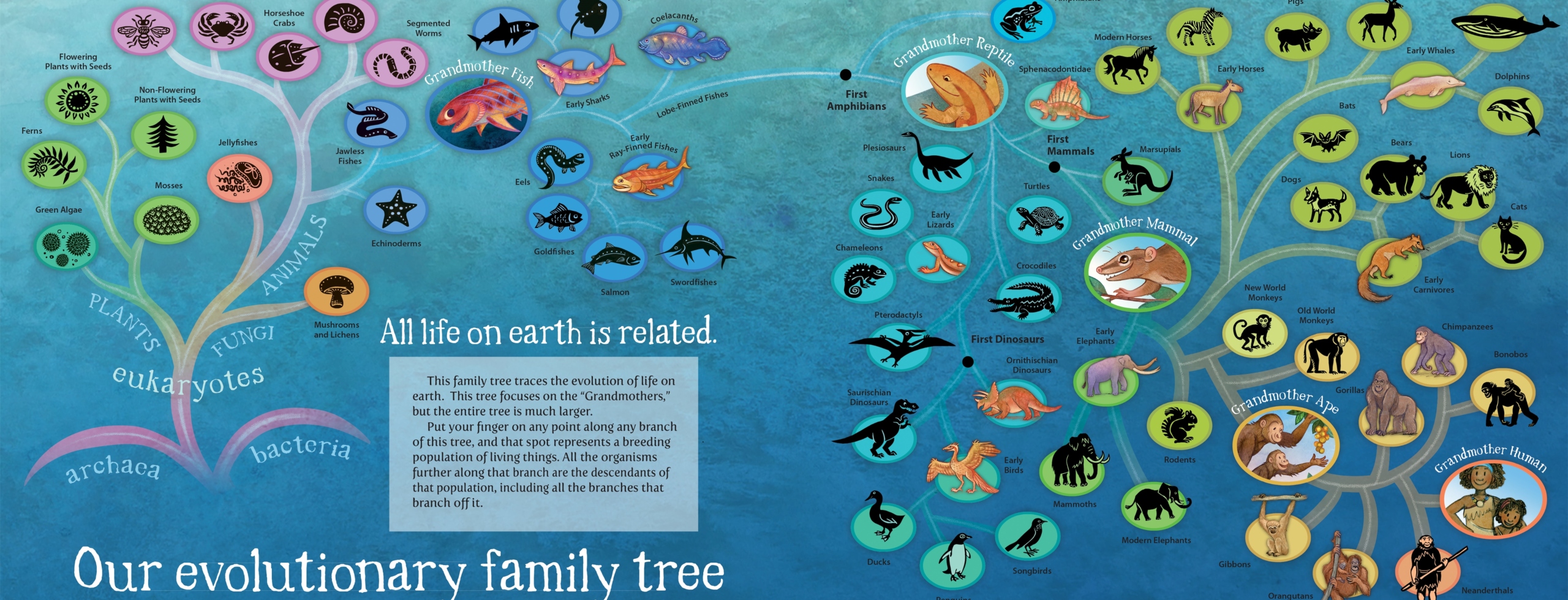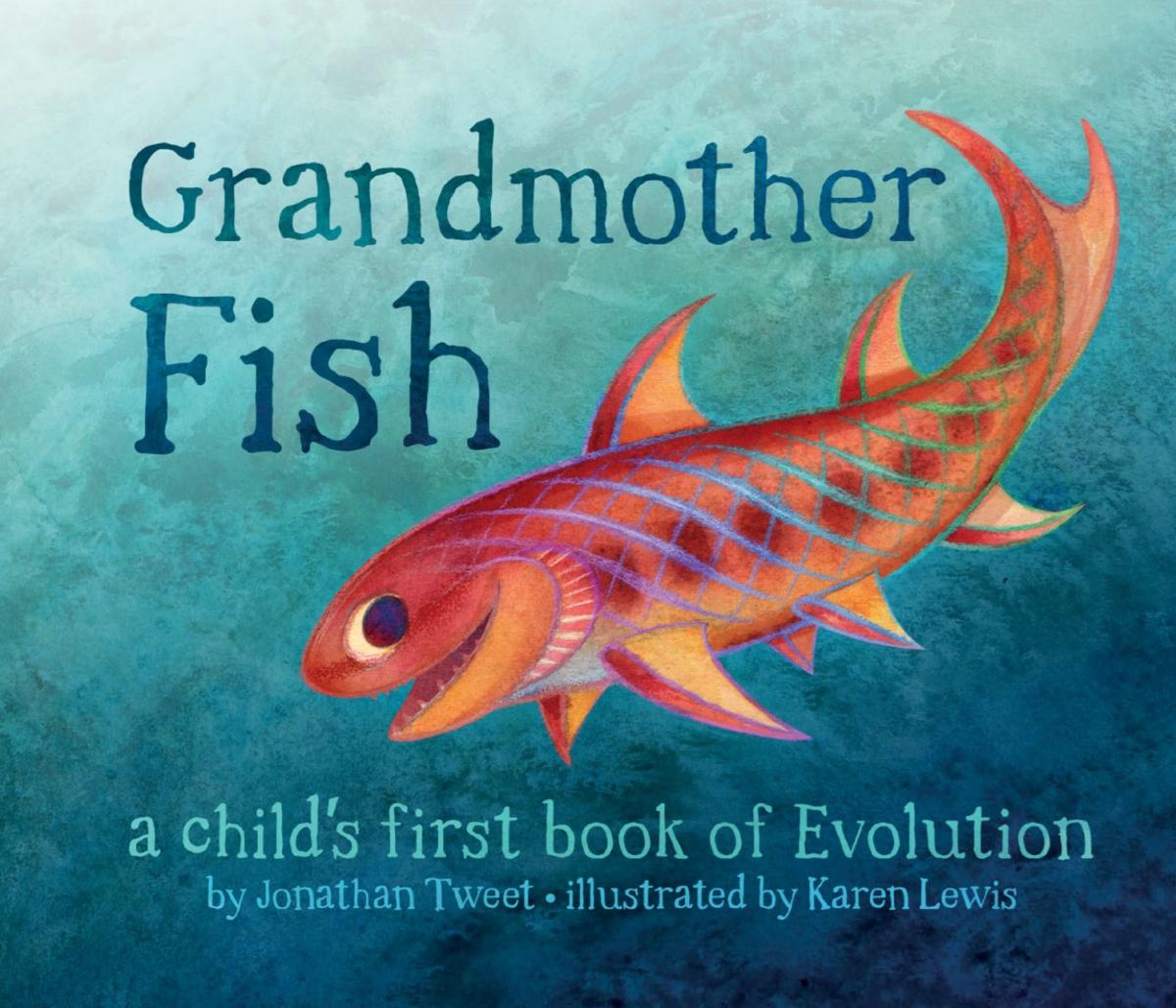 A couple of months ago, Minda Berbeco asked me to review a new book that teaches evolution to preschoolers. I admit that I agreed with trepidation. As you all know, evolution misconceptions are a big pet peeve of mine, and they tend to be the norm in communications aimed at younger audiences. The argument in favor of their inclusion is usually that teleology (as in, birds needed to fly, so they got wings) and anthropomorphism (as in, birds were sad that they couldn’t fly, so they got wings) are acceptable ways to make the material accessible to children. But they’re not—in fact, they do tremendous damage, making it difficult for the children to ever truly understand and accept evolution and how it works. (Read about the most recent cognitive research here.) So, I went in expecting to find pages of cute but completely cringe-worthy content.
A couple of months ago, Minda Berbeco asked me to review a new book that teaches evolution to preschoolers. I admit that I agreed with trepidation. As you all know, evolution misconceptions are a big pet peeve of mine, and they tend to be the norm in communications aimed at younger audiences. The argument in favor of their inclusion is usually that teleology (as in, birds needed to fly, so they got wings) and anthropomorphism (as in, birds were sad that they couldn’t fly, so they got wings) are acceptable ways to make the material accessible to children. But they’re not—in fact, they do tremendous damage, making it difficult for the children to ever truly understand and accept evolution and how it works. (Read about the most recent cognitive research here.) So, I went in expecting to find pages of cute but completely cringe-worthy content.
Boy was I wrong. From page one, it was clear that Grandmother Fish was better than I expected. By the time I had finished reading the educational material at the end, I knew this was a book I wanted on my daughters’ bookshelf. In short: it’s heads and shoulders above any evolution book for children that I've ever seen.
I had a chance to ask the book’s author, Jonathan Tweet, a few questions to get the lowdown on how this marvelous book came to be.
Stephanie Keep: How did you come to write this book? Are you an educator? Scientist? Parent? All of the above?
Jonathan Tweet: Fifteen years ago when my daughter was little, I started working on the book, trying to figure out a way to teach the basics of evolution to little children—not just for my own daughter, but also for the kids I interacted with in Girl Scouts, Destination Imagination, and Unitarian Sunday school. All my life I’ve been a fan of evolution, of biology, and of prehistoric animals, so it was a fun project to putter with. Professionally, I’m a game designer working on complicated, geeky tabletop 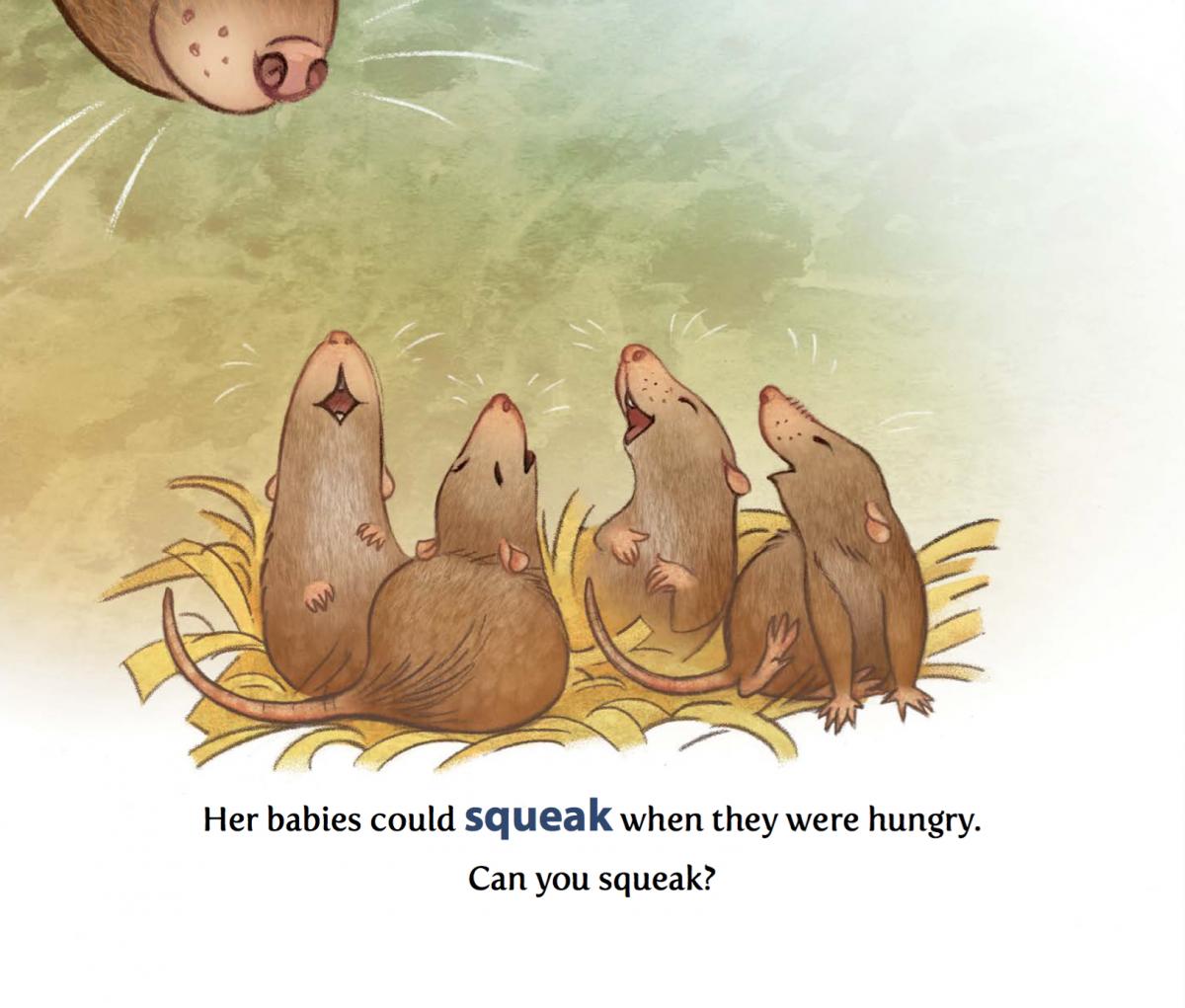 games. In that role, I’ve spent decades trying to figure out how to make complicated ideas not just understandable but also attractive and engaging, so the project was a good fit for me. Two years ago, after noodling on the challenge all that time, I finally had the breakthrough that makes the book sing—the interactive component, in which children are coaxed to wiggle like a fish or hoot like an ape. This interaction makes the book engaging even for little children, and frankly it’s adorable.
games. In that role, I’ve spent decades trying to figure out how to make complicated ideas not just understandable but also attractive and engaging, so the project was a good fit for me. Two years ago, after noodling on the challenge all that time, I finally had the breakthrough that makes the book sing—the interactive component, in which children are coaxed to wiggle like a fish or hoot like an ape. This interaction makes the book engaging even for little children, and frankly it’s adorable.
SK: You got funded via Kickstarter, right? Can you tell me about that?
JT: Kickstarter has a lot to do with how well the book turned out, so that’s a great question. About two years ago, my plan was to release an eBook. My goal was to fund the book out of savings, and an eBook is cheaper to publish than a hardcover. But as I talked to people about my plans, their eyes would light up. Evolution for preschoolers? That idea got people excited. I realized that I had an appealing concept that would be successful on Kickstarter, so I changed plans. The Kickstarter campaign funded in just three days and continued to grow until we’d raised over $36,000.
But that’s not all! When you’re preparing for or running an attractive Kickstarter campaign, people want to help. They see that you’re putting your work on the line and trying to make something happen, and they pitch in. I got a lot of advice from friends and strangers, help that significantly improved the look and content of the book. The Kickstarter campaign was also a reason for me to reach out to some of my favorite thinkers for help, such as Steven Pinker and Daniel Dennett. People promoted the book on the Internet because they wanted it to succeed. And now there are over a thousand people around the world who backed Grandmother Fish and feel as though they’re part of the team—because they really are. (Literally, too, since I put their names in the coversheet!) The Kickstarter process was exhausting and expensive, but it helped me make a better book and reach more people. When I decided to go the Kickstarter route, I had no idea how much that decision was going to help the whole effort.
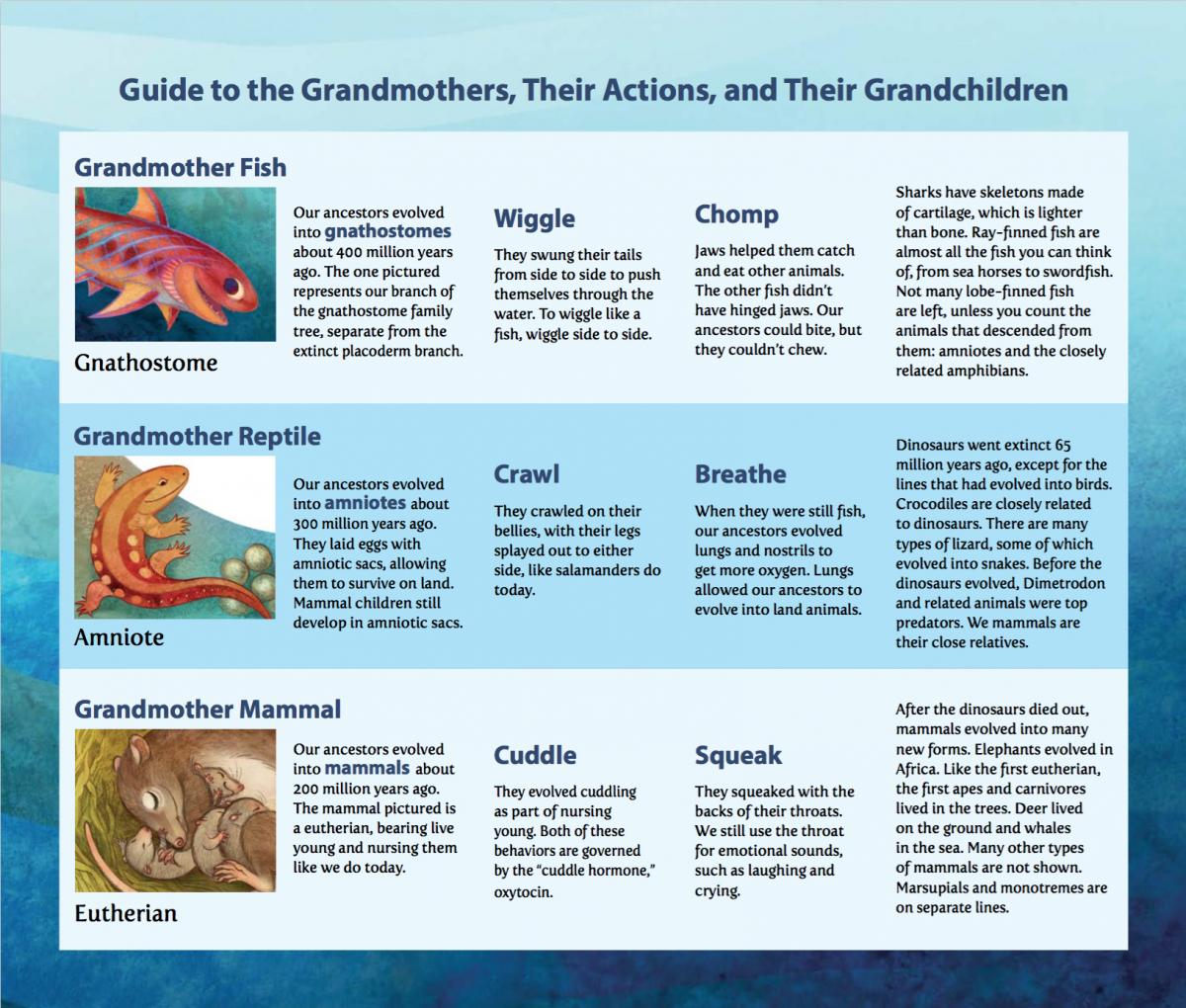
SK: As you worked on the project, did you survey available books about evolution aimed at young children? What did you find?
JT: There are several great evolution books for kids out there. I’m a big fan, for example, of Daniel Loxton’s book Evolution: How We and All Living Things Came to Be. But what I found was that the books are all aimed at schoolchildren. I thought I was writing “one more” evolution book for preschoolers. It turned out to be the only book to reach kids so young. That idea gets people excited.
SK: You say at the end, in your letter to “parents, teachers, babysitters, and other readers,” that “Evolution by natural selection is very difficult to understand because it doesn’t make intuitive sense.” I always thought it didn’t make sense because it made too much intuitive sense. People are always trying to make it out to be more difficult a mechanism than it is. I wonder what aspect of natural selection you think makes the least “intuitive sense”?
JT: When I was young, I couldn’t understand how an Ankylosaurus could ever evolve into a human. Intuitively, dinosaurs seemed to be my ancestors because they came before me, but of course they’re not our ancestors or the ancestors of any animals alive today. Creationists ask, “Why are there still monkeys?” and they think it’s a good argument. Why do they make that mistake? Because the human mind likes simple plans. We know that puppies turn into dogs and kittens turn into cats, so it makes intuitive sense that monkeys would “turn into" into humans. It “makes sense,” but it’s wrong.
Contrary to criticisms from creationists, the theory of evolution doesn’t say that monkeys evolve into humans. Ancient monkeys evolved into all sorts of things, with humans just one species of descendants. Today’s dogs were once puppies, and today’s puppies will soon be dogs. We get that, but evolution doesn’t work that simply. Today’s humans evolved from prehistoric monkeys, but today’s monkeys are not evolving into humans. And today’s chimps also evolved from those same monkeys. So did all of today's apes and all New World and Old World monkeys. Evolution doesn’t follow a plan or a cycle. The evolution of life on Earth is a vast, bewildering history of miraculous one-offs. That’s not how the brain understands things. We want simple plans and patterns, so much so that we often see simple plans even when they’re not there.
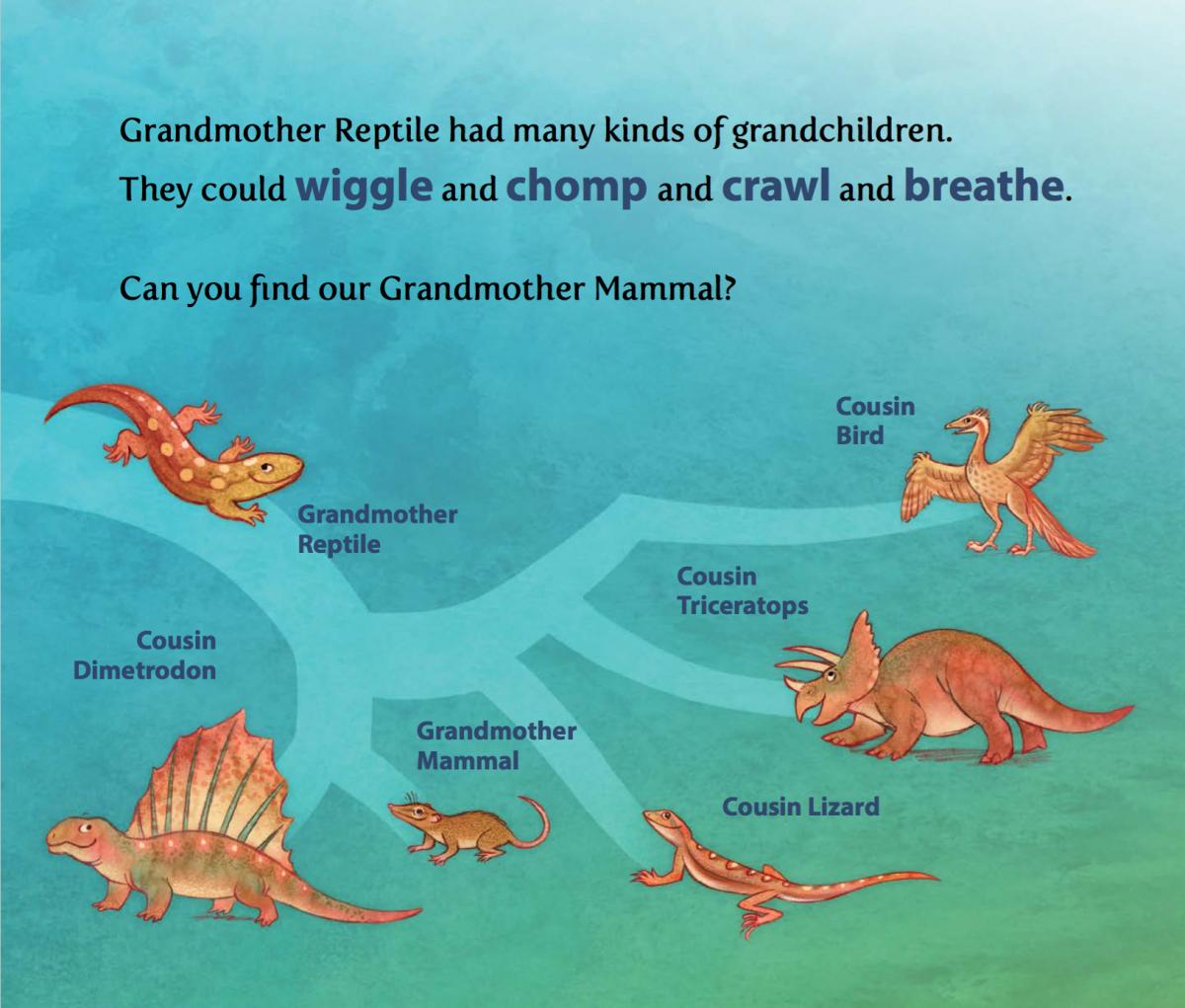 With Grandmother Fish, the story is about human evolution, but I made a point of showing that each “grandmother” has many children, which represents evolution going in all directions at once. Most of the prehistoric creatures in the book are our “cousins,” not our “grandmothers.”
With Grandmother Fish, the story is about human evolution, but I made a point of showing that each “grandmother” has many children, which represents evolution going in all directions at once. Most of the prehistoric creatures in the book are our “cousins,” not our “grandmothers.”
[Editor’s note: My only real criticism of the book is that the narrative from grandmother (singular) to grandmother (again, singular) could reinforce a misconception that species descend from a single individual common ancestor, as opposed to a population of common ancestors. However, as Tweet said, he goes out of his way to emphasize that every “grandmother” has all kinds of “grandchildren,” so even this is addressed in a way. I just wish it were grandmothers having all kinds of grandchildren.]
SK: You devote a page at the end of the book to correcting common errors regarding evolution. Was there any particular error you found difficult to avoid when writing?
JT: The biggest evolutionary idea that the story misses is that survival is the exception not the rule. Most organisms die without reproducing, and wholesale extinction is common. For every lineage that has survived to the present, there are countless lineages that have been wiped out. A whole vast array of multituberculate mammals is gone. An entire branch in the reptile line, the parareptiles, went extinct 200 million years ago. Before amniotes, amphibians ruled. Now all that’s left of them is one branch, relegated to limited environmental niches. Of all the hominins on our branch of the ape family tree, only one species remains, and that’s us. The story of evolution is founded on whole classes of living things being wiped out, and that’s not in the story. The science notes in the back of the book touch on the topic of death, and it’s up to the parents how to address it.
SK: What do you hope to accomplish with this book?
JT: My dream is that children will love the idea that we are descended from animals and that all living things are our family. I want them to feel it in their bones and to see the world that way. That might sound corny, but I agree with Neil deGrasse Tyson when he says that it’s a “soaring spiritual experience” to feel that connection.
SK: Will we hear more from you? Is Cousin Cephalopod in the works? I have a thing for octopuses. Oooh, or Cousin Xenarthran? C’mon giant ground sloths!
JT: You’re not the only one who wants to see octopuses get more treatment! One way or another, you’ll see more from me. The support I’ve gotten on this book has been tremendous, and I have several ideas for more kids’ books. Another puzzle I’ve been working on for years is how to create a game that is based on solid evolutionary science. Happily, I’ve had a breakthrough on that problem, too. My next Kickstarter will be to publish Clades, an evolution-themed card game for kids and grownups. It will have cephalopods.
After the Clades card game, my plan is to do a book on climate change for kids ages 5–10. That will be with a major national partner, and it might not be right after the card game. Climate change is a big idea, and I know that the NCSE would back me on that, too. [Editor's note: Yes, we would!] Other projects might be a “primal instincts” drumming class, a cute book about animals and human families, a child’s first book of the solar system, an evolution-themed board book for tiny kids, a serious book about the historical Jesus and why we atheists should like him, or some more game projects. It’s hard to decide what to do next, and that’s a fun place to be.
I’m bound to do more along these lines, but Grandmother Fish sure is a hard act to 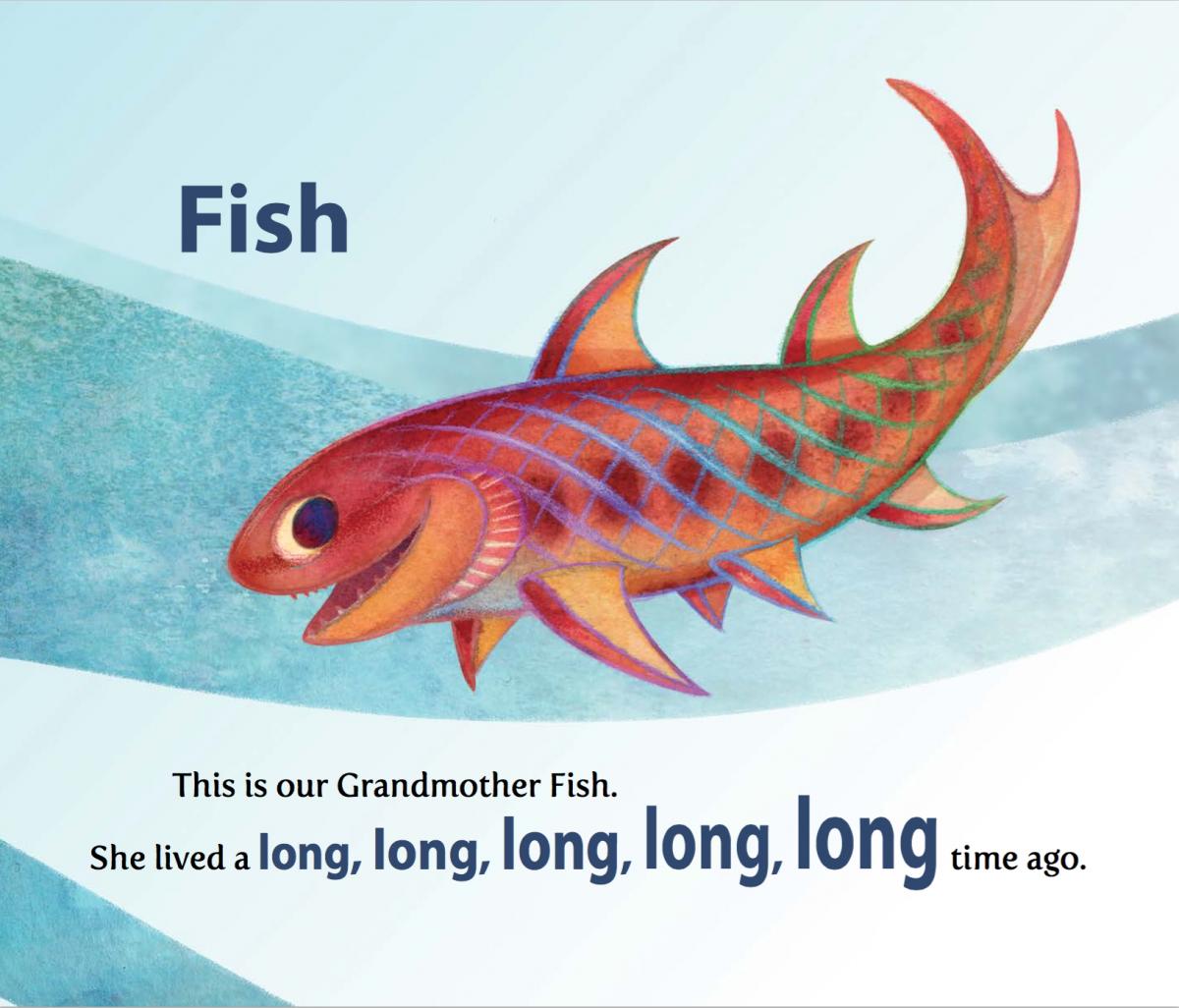 follow. It’s special because it’s our story. When a parent holds their child in their lap and reads this book, the book is about the two of them—parent and child. The parent cuddles with the child like Grandmother Mammal and tells a story like Grandmother Human. The element of self-reference really helps the child feel like part of the story. During a read-through, we caught on tape the moment when a girl realized that the story was about her. She realized that she, too, evolved from Grandmother Fish, and she was almost speechless with wonder. It’s a delightful scene, and it’s hard to imagine another book that could inspire a child like that. There’s a reason I kept working on this book for fifteen years. It’s special.
follow. It’s special because it’s our story. When a parent holds their child in their lap and reads this book, the book is about the two of them—parent and child. The parent cuddles with the child like Grandmother Mammal and tells a story like Grandmother Human. The element of self-reference really helps the child feel like part of the story. During a read-through, we caught on tape the moment when a girl realized that the story was about her. She realized that she, too, evolved from Grandmother Fish, and she was almost speechless with wonder. It’s a delightful scene, and it’s hard to imagine another book that could inspire a child like that. There’s a reason I kept working on this book for fifteen years. It’s special.
Teachers! Are you interested in getting a free copy of the book? Enter to win here! The first ten people will get a copy! [Editors note: the books have all been given away, but you can still sign up for NCSEteach to find out more about other opportunities like this in the future!]
Are you a teacher and want to tell us about an amazing free resource? Do you have an idea for a Misconception Monday or other type of post? Have a fossil to share? See some good or bad examples of science communication lately? Drop me an email or shoot me a tweet @keeps3.

